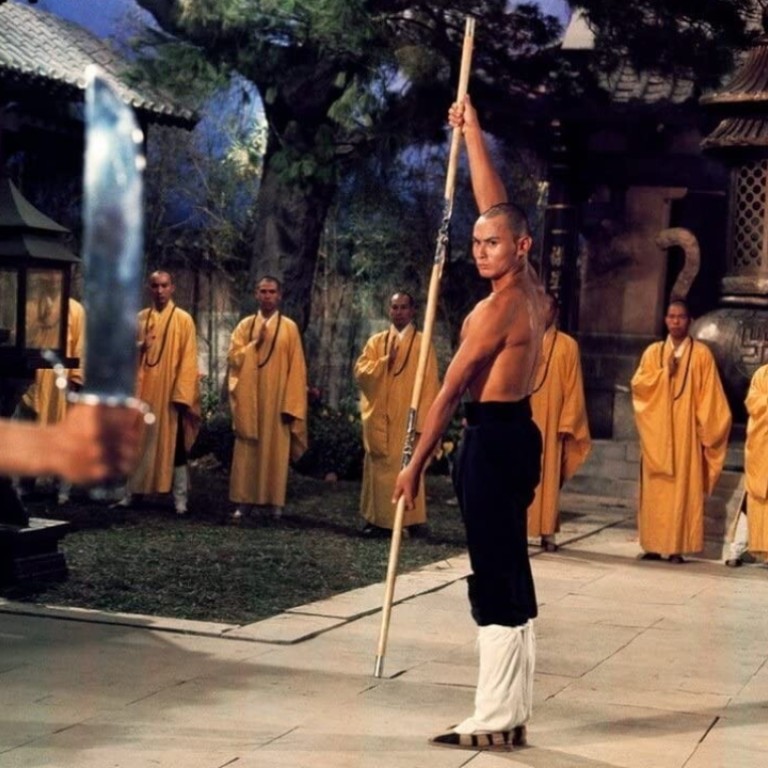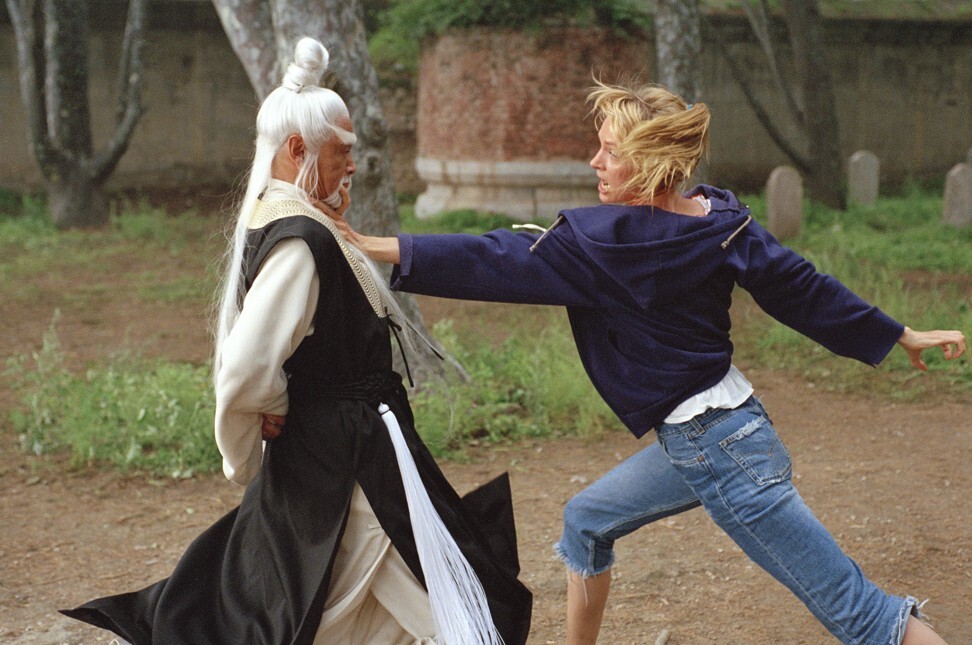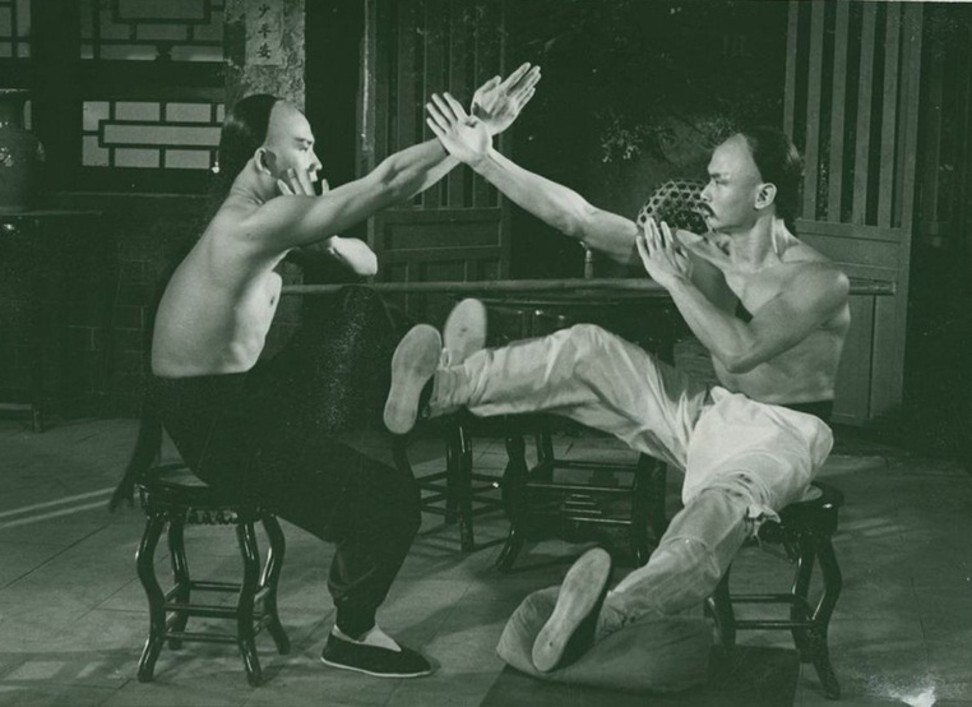
How Gordon Liu became a martial arts superstar thanks to Shaw Brothers movies like Dirty Ho and The Eight Diagram Pole Fighter
- Liu made his name as the bald-headed monk in The 36th Chamber of Shaolin in 1978 and went on to appear in several acclaimed Shaw Brothers movies
- Cast later by Quentin Tarantino in the Kill Bill films, Liu was an elegant fighter who learned kung fu from martial arts choreographer Lau Kar-leung’s father
“He has generally appeared in films of some quality,” a Hong Kong critic wrote in 1981.
Liu came into vogue again during the martial arts boom of the 1990s, taking supporting roles in movies such as Last Hero in China, and yet again in the 2000s when Quentin Tarantino cast him in the two Kill Bill films. Sadly, the affable Liu suffered head trauma when he fell while having a stroke in 2011, and has been in a nursing home ever since.
Martial arts performers fall vaguely into different camps – actors who learn martial arts for their roles, former stuntmen who have picked up martial arts as their careers progressed, those who learn martial arts in Beijing Opera schools, and those who began their careers as martial artists and then moved into acting.
Liu is a swift and elegant fighter who stands out from the genre’s more muscular practitioners because of his lean frame – he had to take weightlifting lessons to develop muscles for The 36th Chamber of Shaolin.
An exponent of the Southern martial arts tradition, his main style is hung ga, with all the associated animal components like Tiger and Crane, although he has performed other styles. He is noted for his skill with the pole (in Chinese, gun), the traditional weapon of the Shaolin monks, and is also an expert with the hard-to-handle three-section staff (san jie gun).

“I thought Kwan Tak-hing was very manly playing Wong Fei-hung, he was everything that a Chinese man ought to be,” Liu said in an interview. “I was impressed by his kung fu, and the way he rescued others. He would never kill a villain, instead he would teach them to be good. That kind of hero made a deep impression on me, so I decided to take kung fu classes.”
Liu decided to learn what he felt was the most challenging martial arts style, hung ga, to develop character. The fist-oriented southern style is certainly difficult, and its foundational Horse Stance alone can take some years to master. Keeping his lessons a secret from his family, Liu attended the Lau Cham Martial Arts school founded by Lau Kar-leung’s father, a regular actor in the classic Wong Fei-hung movie series.
Liu was the youngest student in the class. He was well liked by the Lau clan, and was adopted into the family as a godson to Lau’s mother. The name he is known by in his movies, Liu, is the Mandarin Chinese version of the Lau family name (Lau Kar-leung is also known as Liu Jia-liang.) The English name “Gordon” came later, chosen for him by Shaw Brothers.

By then Lau was established as a leading martial arts choreographer, and known for his work with legendary director Chang Cheh. Liu started to take small roles in films through Lau, and Neven took the lead role in a disastrous and little-known early film directed by Lau called Breakout from Oppression in 1973.
Lau had promised to make Liu a star, but Chang was not impressed by his skills. After an acrimonious split with Chang, Lau rejoined Shaw Brothers in Hong Kong as a director, and took Liu with him. Liu starred in 1976’s Challenge of the Masters before The 36th Chamber of Shaolin made him a star and forged his image as a bald-headed fighting Shaolin monk.
Liu’s work with Lau for Shaw Brothers is generally excellent, and his performances are relatively diverse. His role in Return to the 36th Chamber, which is a companion to the original rather than a sequel, shows an unexpected talent for comedy – Liu has said it is his favourite film.
He also puts in unusual performances in the unfortunately named Dirty Ho and the bleak and violent Eight Diagram Pole Fighter, Shaw Brothers’ last martial arts production before the studio shut up shop in 1984.
The sly and cheeky Dirty Ho, directed by Lau, is an ironic take on the martial arts genre. It subverts all of Lau’s earlier themes of chivalry and Confucian codes of honour, and highlights the fact that the martial arts shown on screen are artifice.

Liu’s role is complex, as he must simultaneously hide the fact that he can do kung fu while performing it. In one scene he cleverly manipulates Kara Wai Ying-hung’s body to make it look as if it is she, rather than him, who is doing the fighting.
The Eight Diagram Pole Fighter is much more bleak and violent than Lau’s previous directorial work, and unusually features Liu as a character driven by hatred and a lust for revenge.
The film was originally written to pair charismatic star Alexander Fu Sheng with Liu, but the former was killed in a car crash during the shoot (he still appears in some scenes).
Noting Liu’s two exceptional pole fights, martial arts analyst Blake Matthews writes that the ending, “despite the pessimism engendered by the film, is truly one of the greatest moments in classic kung history.”
In this regular feature series on the best of Hong Kong martial arts cinema, we examine the legacy of classic films, re-evaluate the careers of its greatest stars, and revisit some of the lesser-known aspects of the beloved genre. Read our comprehensive explainer here.
Want more articles like this? Follow SCMP Film on Facebook
